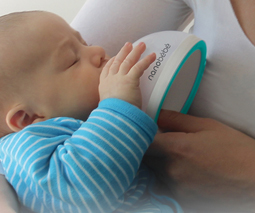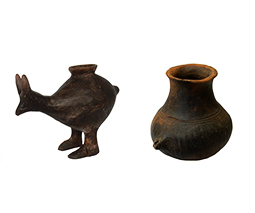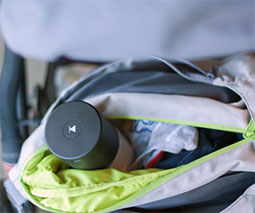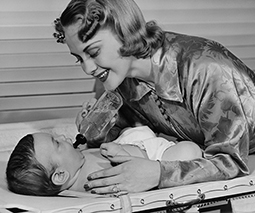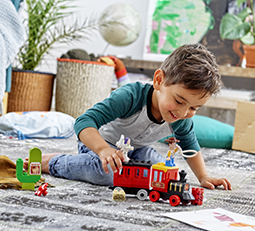Is your baby refusing the bottle? Here’s what you need to do
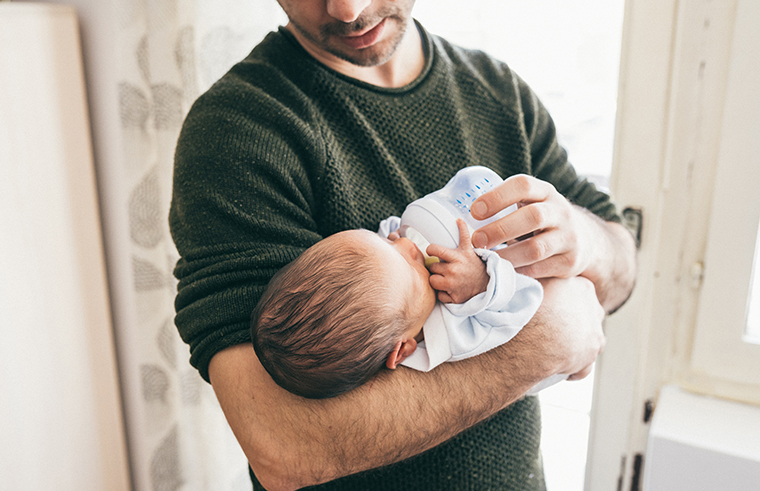
Almost all bottle-fed babies get fussy at some point, and refuse the bottle. Regardless of whether you’re feeding your baby expressed breastmilk or formula in a bottle, the reality is sometimes, seemingly for no particular reason, your baby just won’t want to drink.
There are a range of possible reasons for this behaviour, so before you give up, make sure you’ve looked at each of these potential issues first.
1. Environment – where are you feeding?
Calm and quiet is best
Babies respond best to the bottle when they are in a calm, distraction-free environment. Obviously, this won’t be possible every time they are fed, but if you are introducing the bottle for the first time, do it in a familiar, quiet place that is free of unexpected interruptions. You’ll have a greater chance of initial success that way.
Interestingly, some babies end up taking the bottle when they are mesmerised by something that interests them, such as a mobile hanging above, or if outside, leaves on the trees. Try different settings until you find one that works for you both.
Positioning
Hold your baby in a warm cuddle, holding them gently but firmly in the crook of your elbow. Don’t lie baby flat on their back; a slight incline is best as it helps air bubbles rise during burping. Swaddling your baby, particularly if they are a wriggler, may help too.

2. Equipment – is your bottle working properly?
Teats
Before you introduce a bottle for the first time, make sure you have the correct teat size for your baby’s age and stage. The range of shapes and sizes of teats available on the market differs, and each baby will have a different preference, sometimes dependent on the size of their mother’s nipple (if they were breastfed first). It can take some trial and error to find the right teat for your bub.
Flow rate
The flow rate of the teat is the crucial element in bottle feeding. The flow rate references the number of holes in the teat, which determine how fast the milk flows out. They are usually in newborn, 3-month, 6-month, 9-month and 12-month sizes, but these are recommended as a guide only. If your baby has previously taken the bottle and is refusing it, it may be because the flow is too slow and they need to move up to a faster flow.
Also, if a breastfed newborn is being introduced to the bottle and Mum has a fast flow, you may need to buy a 3 or 6-month teat to compensate for this or they may refuse to drink.
Testing the flow rate
To test the flow rate of a bottle, hold it upside down when filled with room temperature milk. It should drip steadily but not pour out. If you have to shake it to get the milk to drip out, the flow is too slow.
Faulty equipment
Examine bottle teats regularly, as they can become cracked with over-use. Replace regularly to prevent this. Teats can also become blocked and should be cleaned thoroughly after each use.
Make sure the bottle ring is screwed on just right
The bottle ring helps stabilise the pressure inside the bottle for optimal feeding and flow rate. If the bottle ring is too loose, the milk will leak out.
If the bottle ring is screwed on too tightly, air can’t enter the bottle and balance the pressure inside, which makes it very difficult for your baby to extract milk through suction. Very quickly your baby will give up.

3. Emotional response – yours and your baby’s
As an adult, we often forget that feeding is not simply an act of nourishment for babies, but it is an intensely emotional connection between baby and carer (be that their mother, father, grandparent or babysitter).
Feeding, whether breastfeeding or bottle feeding, helps your baby feel secure, safe and loved, knowing their needs are being met.
Babies can also sense your nervousness, frustration or worry. Even if your baby is not taking to the bottle as quickly as you’d hoped, try not to let your frustration show, or it could deter them further.
Expect your baby to grow accustomed to the bottle bit by bit, and start off by letting them drink a little each time – increasing that amount gradually. Perhaps it will only be 10mL the first time, then 20mL the second and so on, until they are drinking 80-100mL in one sitting.
Remember that when your baby fusses, they are asking you to identify and meet a need, whether it be tiredness, discomfort (too hot, cold, sick, wind pains or needing to burp), or simply because they’re not hungry.
If you’re not finding much success with the bottle after a few separate attempts, try these ideas:
- Change the brand of bottle or size of the teat or flow.
- Don’t feed your baby in the place they were previously breastfed, or they may want to be breastfed instead.
- Ask your baby’s other parent, grandparent or carer to try introducing the bottle when you’re not home. Very often Mum’s presence (especially her milky boobs, which babies can smell) can interfere with feeding attempts.
- Change the temperature of the milk in the bottle. Some babies prefer lukewarm, others like it room temperature, and others prefer cooler milk.
- Make sure the bottle is assembled correctly and the teats are not cracked.
- Experiment with different feeding positions until you find one that is comfortable for you both.
- Try feeding bub as they’re dropping off to sleep or waking up.
- Don’t force baby to feed, or they’ll quickly gain a negative association with it. Give them a short break, and if they still aren’t interested, try again for the next feed.
- Try introducing the bottle when baby is hungry, not when they’ve just had a breastfeed.
- Try using a sippy cup or a medicine syringe to feed baby if they flat out won’t accept the bottle.
If you are having any ongoing feeding issues, your maternal child health nurse can often help with tips and suggestions. They will also be able to weigh your baby to ensure they are gaining sufficient weight – a good indicator that your baby is getting enough to eat.

